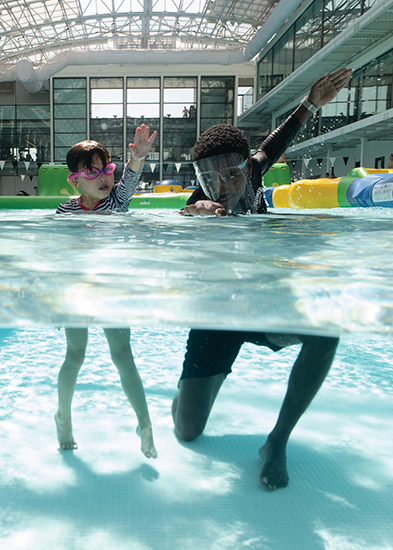Swimming Safety Tips for Summer
Jun 07, 2021 03:34AM ● By Family Features
Playing in or around water is one of the joys of summer, but this treasured seasonal pastime comes with some serious risks. Drowning is the second-leading cause of accidental death for children under the age of 14 in the United States, according to the Centers for Disease Control and Prevention.
As COVID-19 restrictions ease, many families will have informal gatherings and take trips to the beach, increasing the potential for children to have unsupervised access to water. Because of this, it’s important for children to take swimming lessons to learn water safety skills and create safer habits in and around water. As swimming lessons begin across the country, many are being conducted safely with COVID-19 precautions in place.
Protect your family’s safety around water this summer with these tips from the Make a Splash Tour, presented by Phillips 66 and the USA Swimming Foundation.

Designate a Water Watcher and Closely Monitor Children. Designate a water watcher when you are in, on or around water. Watch all children and adolescents swimming or playing in or around water, even if they know how to swim. Keeping young children or inexperienced swimmers within arm’s length at all times can help ensure you’re able to provide assistance if and when it’s needed.
Wear a Life Jacket. Anyone participating in any boating, paddling or towed water sports, regardless of swimming ability in pool or open water situations, should wear a Coast Guard-approved life jacket. Preschool-aged children (5 years old and younger), who are not protected by touch supervision, in particular, should always wear a life jacket. Swimming aids and water toys – such as water wings, inflatable water wings and rings – are not intended to be life-saving devices.
Learn to Swim. Research has shown formal swimming lessons reduce the risk of childhood drowning by 88%. Through the annual Make a Splash Tour, the USA Swimming Foundation, with the support of Phillips 66, encourages children’s swim lessons. By equipping your child with the skill of swimming, you’ll open doors to a lifetime of safety, fun, fitness and even employment opportunities.
While lessons progressively teach a variety of swimming strokes, some of the most important things swimmers learn – even in beginner classes – are breath control and how to float. These basic skills are essential for staying above water should someone find himself or herself unable to touch or too tired to swim to safety. Children can participate in swimming lessons before they can walk, and parent-child swim lessons provide bonding opportunities along with water safety education.
Swim in Designated Areas and Obey Posted Signs and Flags. Ropes, buoys and flags in larger bodies of water like lakes or oceans are commonly used to mark off safe swimming areas and provide visual cues about changes in depth, underwater surfaces and currents. Teach children what these signs and markers mean and that they’re in place as safety tools, not toys to play with or float on.
Learn CPR. If the unthinkable does happen, knowing how to perform CPR allows you to take immediate action, which has been shown to significantly better the outcome for children with submersion injuries. In the time it takes for paramedics to arrive, you could save someone’s life. Seconds count; the quicker CPR is started, the better the chances of recovery. There are many places that offer CPR training, including community organizations and nonprofit groups. Remember to keep your certification current once you have completed the initial requirements.
Make safety a priority for your summer water fun. For more information, including swim lesson providers in your area, visit usaswimming.org/makeasplash.
